[吴恩达团队自然语言处理第3课_2]LSTM NER SiameseNetwork
[吴恩达团队自然语言处理第3课_2]LSTM NER SiameseNetwork
LSTM#
Outline
- RNNs and vanishing/exploding gradients
- Solutions
RNNs#
-
Advantages
- Captures dependencies within a short range
- Takes up less RAM than other n-gram models
-
Disadvantages
-
Struggles with longer sequences
-
Prone to vanishing or exploding gradients

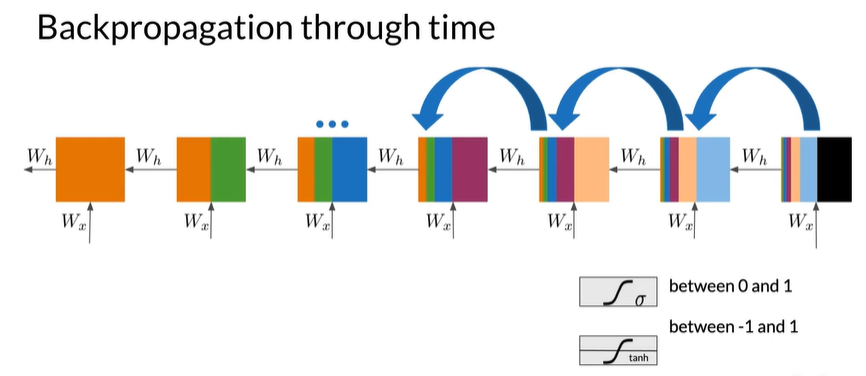

-
Solving for vanishing or exploding gradients#
-
Identity RNN with ReLU activation ,-1->0 将负值替换为0,使其更接近单位矩阵
-
Gradient clipping 32->25 将>25的值剪裁到25,限制梯度的大小
-
Skip connections

Introduction#
Outline
- Meet the Long short-term memory unit!
- LSTM architecture
- Applications
LSTMs:a memorable solution#
-
Learns when to remember and when to forget
-
Basic anatomy:
- A cell state
- A hidden state with three gates
- Loops back again at the end of each time step
-
Gates allow gradients to flow unchanged
LSTMs: Based on previous understanding#
Cell state=before conversation
接到朋友电话之前,想的是无关朋友的内容
Forget gate=beginning of conversation
接电话时,把无关的想法放在一边,保留我想要的任何内容Input gate=thinking of a response
在通话进行时,获得来自朋友的新信息,同时想接下来可能会谈什么
Output gate=responding
当你决定下一步要说什么
Updated cell state=after conversation
重复直到挂电话,记忆更新了几次
LSTM Basic Structure#
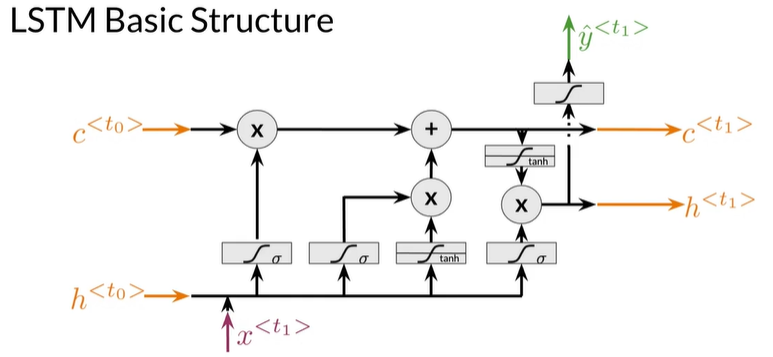
applications of LSTMs#
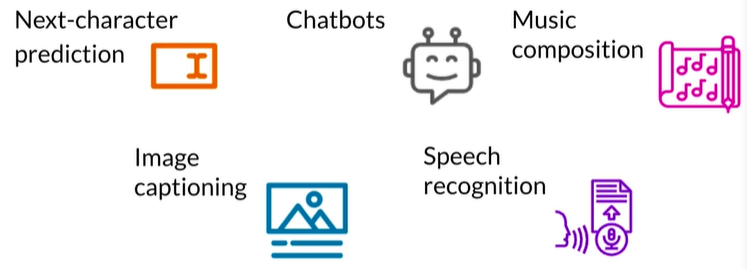
Summary#
- LSTMs offer a solution to vanishing gradients
- Typical LSTMs have a cell and three gates:
- Forget gate
- Input gate
- Output gate
LSTM architecture#
Cell State, Hidden State#
- Cell State 充当memory
- Hidden State 是做出预测的原因
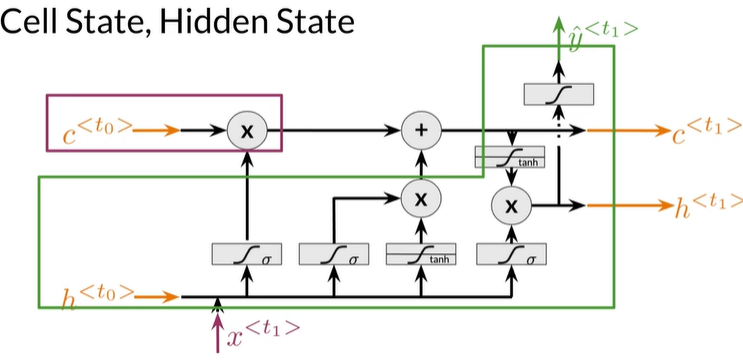
The Forget Gate#
指出什么要保留,什么要丢弃,通过sigmod函数,值被压缩到 0-1 之间,越靠近0越应该被丢掉,接近1 被保留
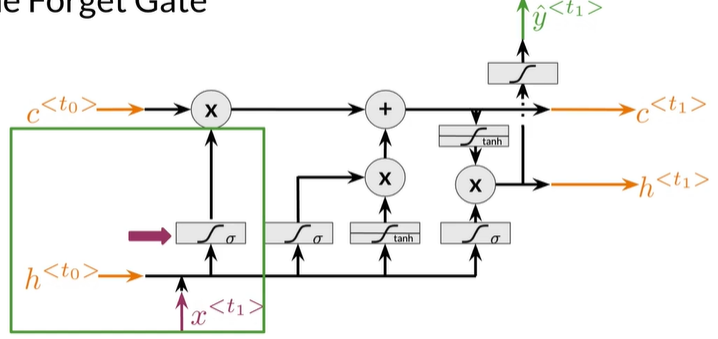
The Input Gate#
更新状态,有两层,sigmod层和tanh层
sigmod:采用先前隐藏状态、当前输入,选择要更新的值,值压缩到 0-1,越接近1重要性越高
tanh:也是采用先前隐藏状态、当前输入,值压缩到 -1 到 1,有助于调节网络中的信息流
最后两个相乘得输出
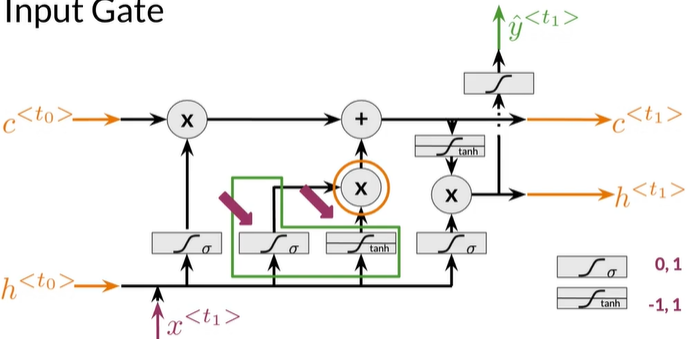
Calculating the Cell State#
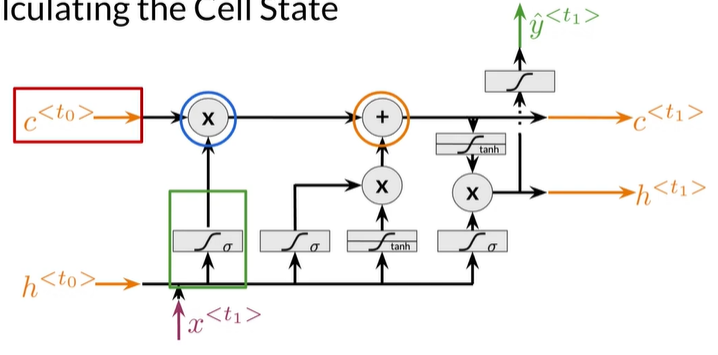
The Output Gate#
决定下一个隐藏状态是什么
采用先前的隐藏状态、当前输入,通过sigmod层
最近更新的 cell state 通过 tanh层
接下来两个相乘得 h

Summary#
-
LSTMs use a series of gates to decide which information to keep:
-
Forget gate decides what to keep
-
Input gate decides what to add
-
Output gate decides what the next hidden state will be
-
-
One time step is completed after updating the states
Named Entity Recognition (NER)#
Introduction#
What is Named Entity Recognition#
- Locates and extracts predefined entities from text
- Places,organizations,names,time and dates
Types of Entities#


Example of a labeled sentence#
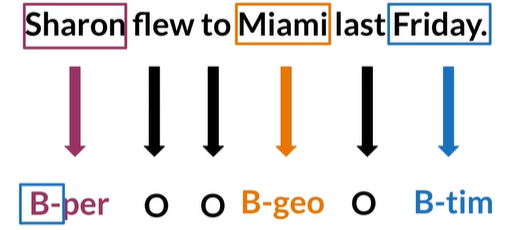
Application of NER systems#
- Search engine efficiency
- Recommendation engines
- Customer service
- Automatic trading
Training NERs process#
Data Processing#
Outline
- Convert words and entity classes into arrays
- Token padding
- Create a data generator
Processing data for NERs
-
Assign each class a number 为每个实体类分配唯一数字
-
Assign each word a number 为每个单词分别其实体类的数字
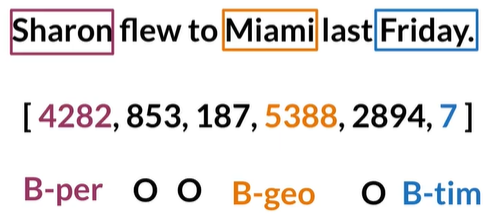
Token padding#
For LSTMs, all sequences need to be the same size.
- Set sequence length to a certain number
- Use the <PAD>token to fill empty spaces
Training the NER#
- Create a tensor for each input and its corresponding number
- Put them in a batch ---->64,128,256,512..
- Feed it into an LSTM unit
- Run the output through a dense layer
- Predict using a log softmax over K classes
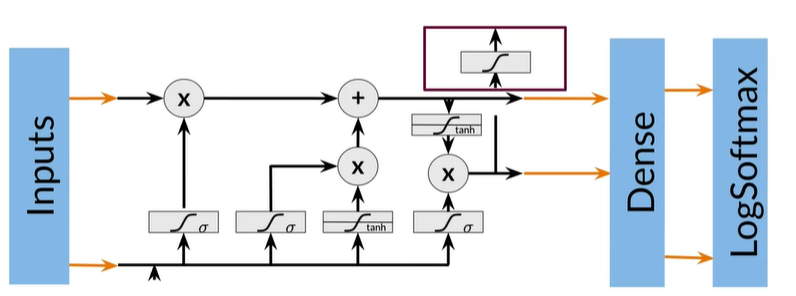
Layers in Trax#
model = t1.Serial(
t1.Embedding(),
t1.LSTM(),
t1.Dense()
t1.LogSoftmax()
)
Summary#
- Convert words and entities into same-length numerical arrays
- Train in batches for faster processing
- Run the output through a final layer and activation
Computing Accuracy#
Evaluating the model#
- Pass test set through the model
- Get arg max across the prediction array
- Mask padded tokens
- .Compare outputs against test labels

Summary#
- If padding tokens,remember to mask them when computing accuracy
- Coding assignment!
Siamese Networks#
Introduction#
两个相同的神经网络组成的神经网络,最后合并
Question Duplicates#
 比比较单词序列的含义
比比较单词序列的含义
What do Siamese Networks learn?#
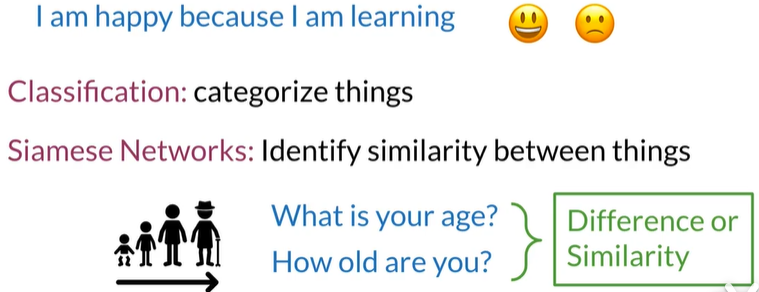
Siamese Networks in NLP#

Architecture#
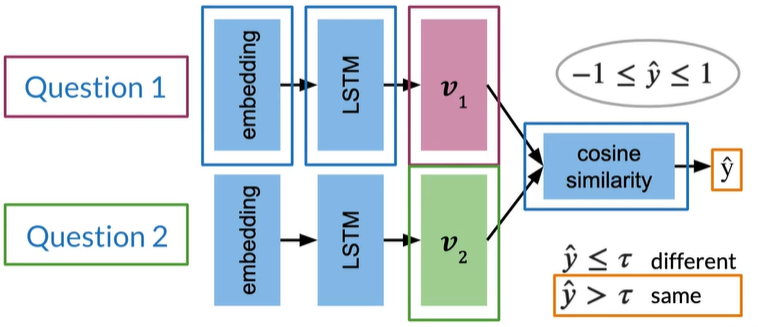
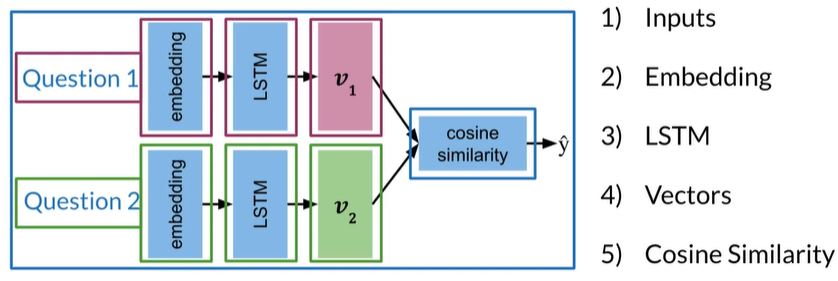
Cost function#
Loss function#
将问题How old are you 作为anchor锚点,用于比较其他的问题
与锚点有相似的意义则为positive question,没有则negative question
相似的问题,相似度会接近1,反之接近 -1
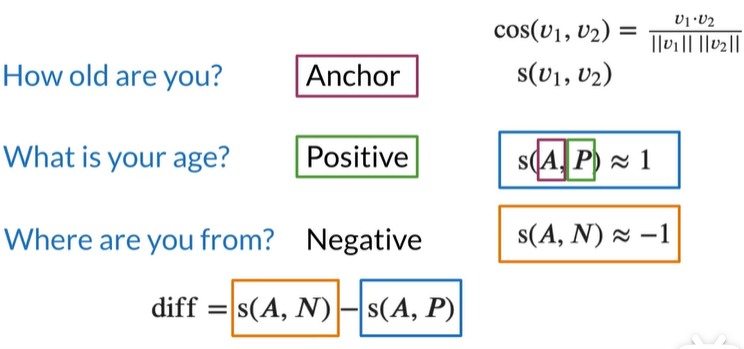
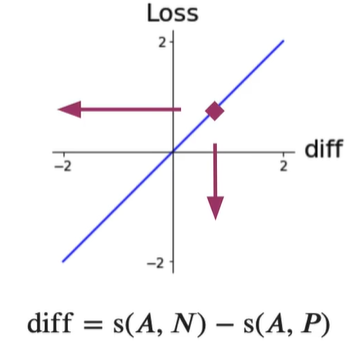
Triplets#
Triplets#

如果给模型正损失值,模型将一次来更新权重得到改进;
如果给模型一个负损失值,就像告诉模型做的好,加大权重,所以不要给负值,如果损失值<0就得0
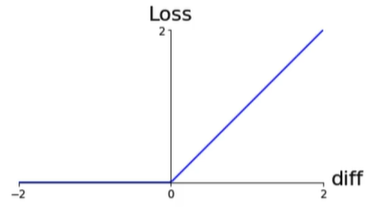
Simple loss:
Non linearity:
Triplet Loss#
将函数左移,如选取alpha=0.2,
如果相似度之间的差距很小,如-0.1,在加入了alpha之后结果>0,让模型可以从中学习
Alpha margin:
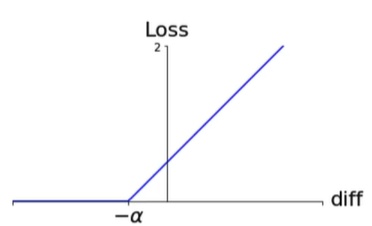
Triplet Selection#
当模型正确预测(A,P)比(A,N)更相似时,Loss=0
此时已不能从 Triplets 学到更多,可以选择更有效的训练,选择让模型出错的triplets而不是随机的,叫hard triplets,是(A,N)十分接近但是仍然小于(A,P)的相似性
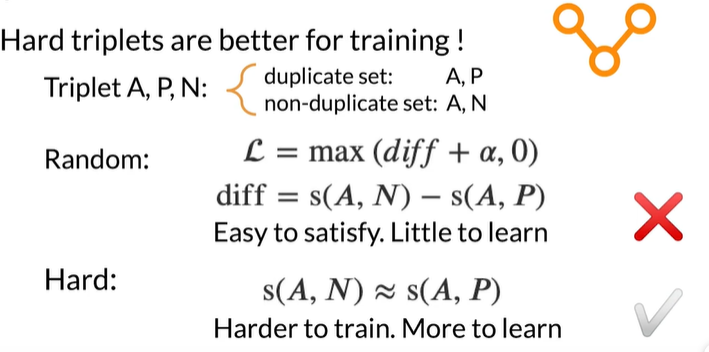
Compute the cost#
Introduction#
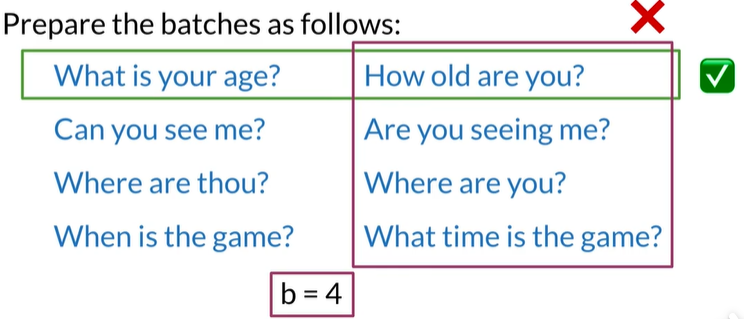
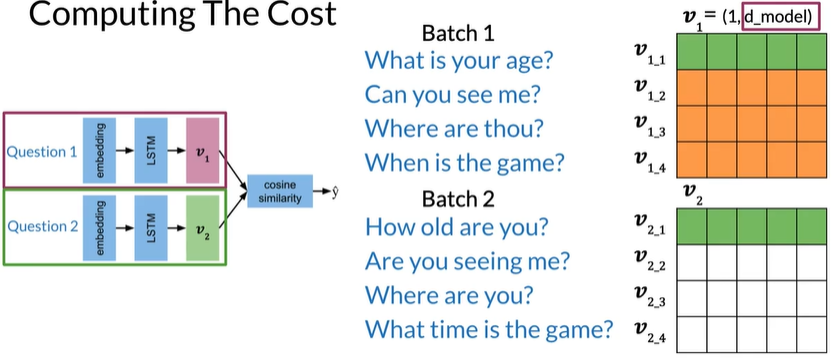
d_model是embedding的维度,同时等于列数为5,batch_size是行数为4

绿色对角线是重复问题的相似度,会大于非对角线的值
橙色是不重复问题的相似度
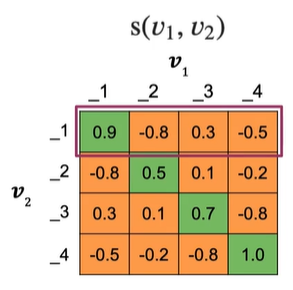
mean negative:
mean of off-diagonal values in each row 每行的非对角线元素,如第一行不包括 0.9
closest negative:
off-diagonal value closest to (but less
than)the value on diagonal in each row
非对角线元素中最接近对角线元素值的元素,如第一行为 0.3
即改相似度为0.3的negative示例对学习贡献最大
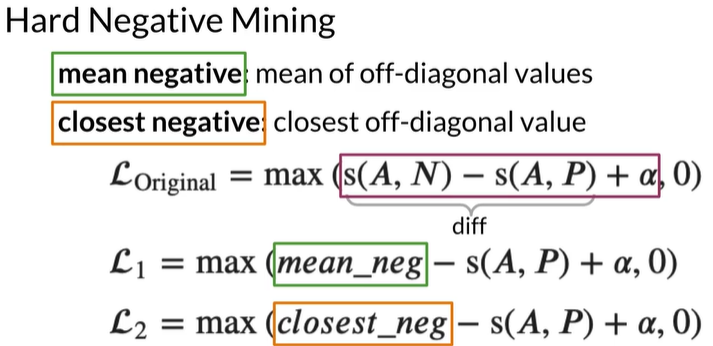
mean neg通过仅对平均值的训练,减少噪声
(噪声是接近0的,即几个噪声值的平均值通常为0)
Closest_neg:与negative example的余弦相似度之间的最小差异,
如果与alpha的差异很小,就可以获得更大的Loss,通过将训练重点放在产生更高损失值的示例上,让模型更快更新权重
接下来将两个Loss相加
Hard Negative Mining#
One Shot learning#
Classification vs One Shot Learning#
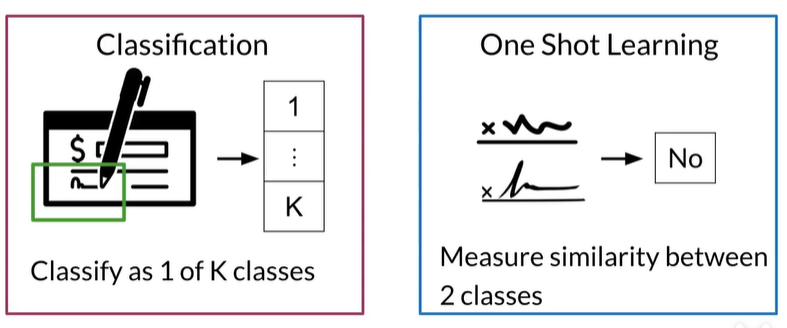
如辨别这首诗是不是Lucas写的,如果分类,将这类诗集加入到类别中,就会变成 K+1类,需要重新训练
而One shot learning不是分类,在Lucas的诗集上训练,然后计算两个类别的相似性
Need for retraining 如在银行出现新签名不需要重新训练
设置阈值来判断是否同一类

Training Testing#
Dataset#

Prepare Batches#
同一个batch的内容是不会重复的,但和另一个batch对应位置的元素重复

Siamese Model#
两个子网的参数相同所以只训练一组权重
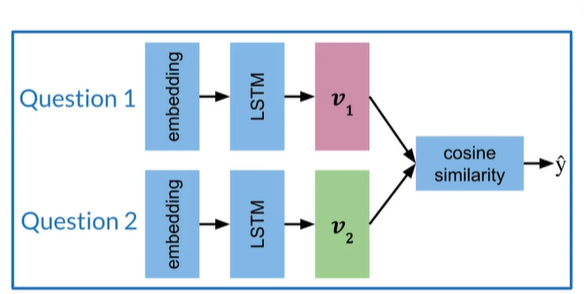
Create a subnetwork:
- Embedding
- LSTM
- Vectors
- Cosine Similarity
Testing#
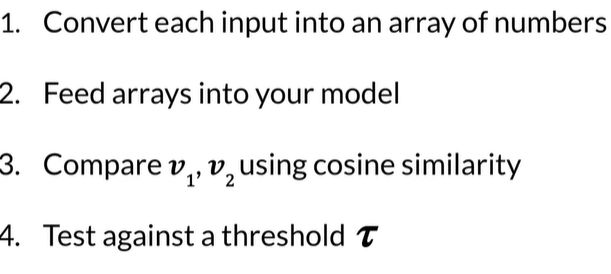




【推荐】国内首个AI IDE,深度理解中文开发场景,立即下载体验Trae
【推荐】编程新体验,更懂你的AI,立即体验豆包MarsCode编程助手
【推荐】抖音旗下AI助手豆包,你的智能百科全书,全免费不限次数
【推荐】轻量又高性能的 SSH 工具 IShell:AI 加持,快人一步